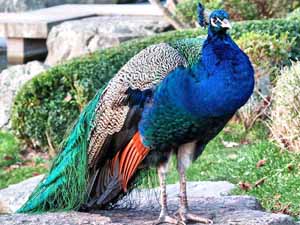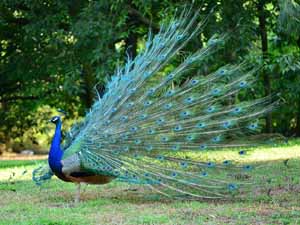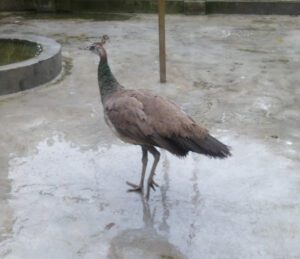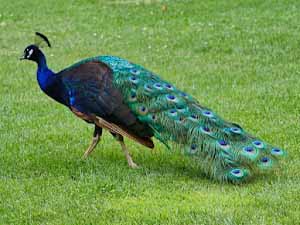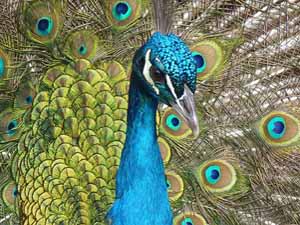Peacock breeding involves acquiring healthy and genetically diverse birds, providing a suitable environment for them to thrive in, and waiting for the breeding season, which typically takes place between March and October.
During this time, male peacocks will display their striking plumage to attract a mate, and if successful, mating will occur and the female will lay a clutch of eggs.
The eggs will require careful incubation and care to ensure the survival of the chicks. Peacock breeding can be a rewarding and fulfilling experience for bird enthusiasts who are patient and dedicated.
However, learning more about peacock breeding is very important for successful peacock farming business. Here we are trying to describe more information about peacock breeding system.
Peacock Breeding Information
When it comes to breeding, it is important to ensure that the peafowl are mature and ready to mate. Male peacocks typically reach sexual maturity at around 2-3 years of age, while female peahens can begin laying eggs as early as one year old. During the breeding season (which usually takes place between March and October) male peacocks will display their plumage in an attempt to attract a mate. This display, known as a “train,” consists of a series of iridescent feathers that can be raised and fanned out to create a dazzling display of colors.
Once a male peacock has attracted a mate, he will begin the mating process by performing a courtship dance. This dance involves the male fanning out his train and displaying it to the female while also emitting a series of calls and vocalizations. If the female is receptive, she will signal her acceptance by crouching down and lifting her tail. The male will then mount the female and mating will occur. After mating, the female will begin to lay eggs. Peahens typically lay one egg every other day, with a total clutch size of around 3-8 eggs. It is important to provide a safe and comfortable nesting area for the female, as well as a suitable substrate such as straw or wood shavings for her to lay her eggs in.
Once the eggs have been laid, they should be removed and incubated in a separate area. Peafowl eggs have a relatively long incubation period of around 28 days, and require a stable temperature and humidity level to develop properly. Once the eggs hatch, the chicks will require close attention and care for the first few weeks of their lives, including proper nutrition and protection from predators.
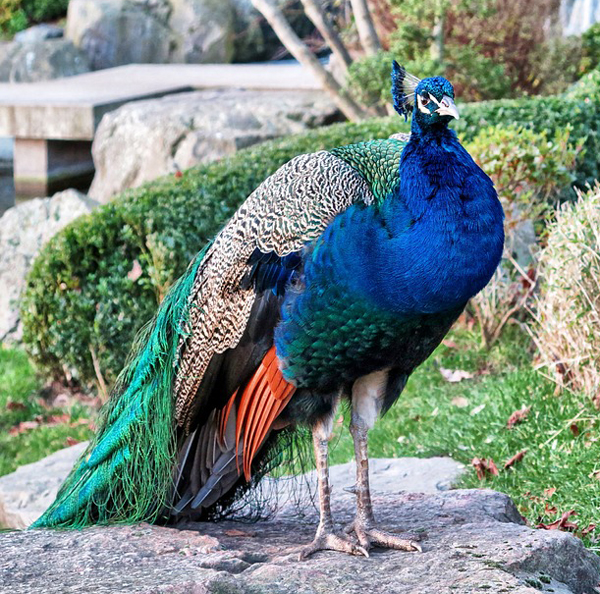
Breeding Season
Peacock breeding season typically takes place between March and October, when the days are longer and the temperatures are warmer. During this time, male peacocks display their striking plumage in an attempt to attract a mate. During the breeding season, female peafowl will lay a clutch of eggs in a secure nesting area. Peahens typically lay one egg every other day, with a total clutch size of around 3-8 eggs. Once the eggs have been laid, they should be removed and incubated in a separate area. Peafowl eggs have a relatively long incubation period of around 28 days, and require a stable temperature and humidity level to develop properly.
Reproduction Cycle
Once mating has occurred, the female will begin to produce eggs. Peahens typically lay one egg every other day, with a total clutch size of around 3-8 eggs. The eggs are laid in a secure nesting area, and the female will incubate them for around 28 days. During this time, the female will also pluck feathers from her breast to create a warm and comfortable nesting area for the eggs. Once the eggs hatch, the chicks will require close attention and care for the first few weeks of their lives, including proper nutrition and protection from predators. The male is typically responsible for protecting the chicks and teaching them important survival skills, such as finding food and avoiding danger.
As the chicks grow, they will gradually become more independent and will eventually reach sexual maturity. Male peacocks typically reach sexual maturity at around 2-3 years of age, while female peahens can begin laying eggs as early as one year old. Once they reach maturity, the cycle begins anew, with the males displaying their plumage and engaging in courtship rituals to attract new mates.

Breeding Age
Peacock breeding age varies between males and females. Male peacocks typically reach sexual maturity between the ages of 2-3 years, although some males may not fully mature until they are 4-5 years old. At this age, male peacocks will begin to display their striking plumage and engage in courtship rituals to attract a mate. Female peahens, on the other hand, can begin laying eggs as early as one year old, although they may not be fully mature until they are 2-3 years old. At this age, female peahens will typically begin to produce a clutch of eggs during the breeding season, which lasts from March to October.
Mating Dance
The peacock mating dance is a stunning display of color and movement that is designed to attract female peahens for mating. Male peacocks, with their strikingly beautiful plumage, use their tails as a display to attract the attention of potential mates. The peacock mating dance typically begins with the male peacock positioning himself in front of the female, spreading his tail feathers in a fan-like shape, and beginning to vibrate them rapidly. This causes the iridescent feathers to shimmer and sparkle in the sunlight, creating a dazzling display of color that is meant to capture the female’s attention
Do Peacock Mate Through Eyes?
There is a popular misconception that peafowl, or peacocks specifically, mate through their eyes. This belief has been perpetuated by myths and legends, as well as by the striking beauty of the male peacock’s tail feathers. However, the truth is that peafowl do not mate through their eyes. Like most birds, peafowl mate through a reproductive system that is internal and not visible to the naked eye. During mating, the male peacock will mount the female from behind and transfer sperm to the female’s reproductive tract. This process is similar to that of most birds, which have an internal fertilization system.
Hope this guide has helped you. Good luck & may God bless you!

